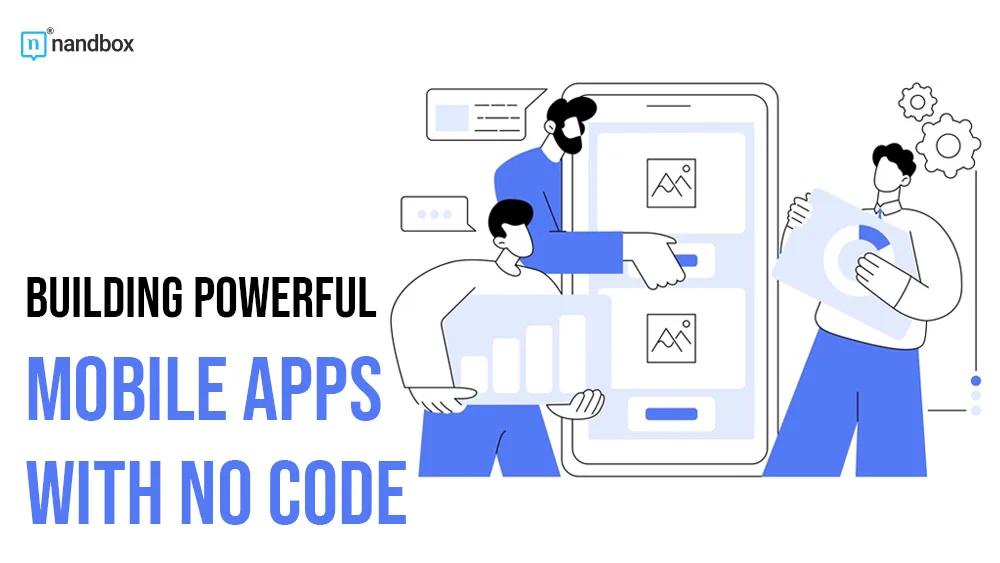Creating a mobile app is one of the most powerful ways to reach users, streamline business processes, and enhance customer engagement. However, traditional app development often requires extensive coding knowledge, specialized skills, and a significant investment of time and money.
Fortunately, no-code platforms are transforming how businesses and individuals create mobile apps, enabling people to bring their ideas to life without writing a single line of code. This guide details the basics of no-code app development and how you can build a powerful, functional app that suits your needs.
Understanding No Code Platforms
No-code platforms are software solutions that allow you to build applications using a drag-and-drop interface, eliminating the need to code. These platforms are designed to be intuitive and accessible, enabling individuals without technical skills to build apps that would have previously required a team of developers.
From e-commerce stores to social networking apps and everything in between, no-code platforms empower creators to focus on functionality and design rather than technical details. Some key features of no-code platforms include customizable templates, pre-built modules, data management tools, and integrations with third-party services. Many platforms also offer secure data storage and compliance options to ensure that your app meets industry standards.
Getting Started With Your App Idea
Here are a few steps you need to follow to start creating your no-code mobile application.
Define Your Purpose and Goals
Start by clarifying your app’s purpose. Ask yourself, What problem does your app solve? Who is your target audience? Having a clear understanding and goals will guide you as you explore features and design choices.
Explore No-Code Platforms
Research various no-code platforms and assess their features, costs, and limitations. Choose a platform that aligns with your app’s goals and offers essential features like user authentication, data management, and integrations.
Select Your Core Features
Once you have chosen a platform, decide on the essential features of your app. Whether it’s user profiles, messaging, or e-commerce capabilities, prioritize the features that will provide the most value to your user.
For instance, if you are building an app for a business that manages public spaces, software that can manage Wi-Fi portals might be a critical feature. This feature can help you manage WIFI connections, control user access, and improve connectivity, all of which enhance the user experience in the app.
Design Your User Interface (UI)
One of the major advantages of no-code platforms is the ease of UI design. Use templates or start from scratch, keeping your app’s aesthetics and user experience in mind. A clean, intuitive interface is the key to ensuring users can navigate your app smoothly.
Test and Launch
After building the app, conduct testing to ensure that everything works as expected. Gather feedback from potential users or team members and make necessary adjustments. Many no-code platforms offer easy deployment options, so you can launch your app directly from the platform once testing is complete.
The Future of No-Code Development
No code development is continuously evolving, making it more accessible and versatile with each advancement. As AI and automation integrate into these platforms, users can expect even more people to participate in the app-building process, democratizing access to technology.
Advanced Strategies for Maximizing No-Code App Potential
Once you’ve built your no-code app, the journey doesn’t end there. To truly leverage the capabilities of your app and ensure it thrives, it’s essential to adopt strategies that go beyond basic development. Here are some advanced techniques to elevate your no-code app’s impact and scalability:
Enhance User Engagement Through Personalization
A well-designed app should cater to the unique preferences of its users. Many no-code platforms provide tools for implementing personalized features, such as dynamic content recommendations or custom user dashboards.
Use analytics tools to track user behavior within the app and make data-driven decisions about optimizing content or functionality for individual users. Personalized experiences improve satisfaction but also encourage repeat usage.
Integrate Automation for Operational Efficiency
Automation is a powerful way to simplify repetitive tasks and improve your app’s performance. Modern no-code platforms often integrate with workflow automation tools like Zapier or Make.
Integration enables you to connect your app with external services seamlessly. For instance, you could automate email notifications, synchronize data with your CRM, or schedule social media updates, all without writing a line of code.
Focus on Data Security and Compliance
As your app grows, so does its exposure to security risks. Users trust apps with their data, so ensuring robust security measures is critical. Explore the security features of your no-code platform, such as encryption, secure API integrations, and access control. Additionally, verify that your app complies with relevant regulations depending on your target audience. Compliance protects users and builds credibility for your app.
Optimize for Multi-Platform Accessibility
Many no-code platforms allow you to create apps that work across different devices, such as smartphones, tablets, and desktops. Take advantage of this by ensuring your app offers a responsive design that adapts to various screen sizes. Additionally, explore Progressive Web App (PWA) capabilities if your platform supports it. PWAs combine the accessibility of websites with the functionality of native apps, broadening your audience reach.
Monetize Your App Smartly
If your goal is to generate revenue, consider implementing smart monetization strategies. Some common options include:
- Subscription models: Offer premium features or content in exchange for recurring fees.
- In-app purchases: Provide upgrades, tools, or digital goods for a one-time payment.
- Ad integration: Use ad networks to include non-intrusive advertisements in your app.
Evaluate the needs of your target audience and choose a model that aligns with their preferences. A combination of these approaches can also diversify your revenue streams.
Measure Success With Analytics
Tracking your app’s performance is essential for ongoing improvement. Incorporate analytics tools to monitor key metrics such as user retention rates, session duration, and feature adoption.
With this data, you can identify underperforming areas and test adjustments to enhance the user experience. Most no-code platforms integrate seamlessly with analytics tools like Google Analytics or Mixpanel.
Endnote
By following these steps, you can turn your app ideas into reality quickly, affordably, and effectively. Whether you’re building for personal projects, startups, or larger businesses, no-code platforms are opening doors to mobile app development for everyone.
In conclusion, the nandbox App Builder offers a robust solution for businesses to create customized mobile apps without coding expertise.





